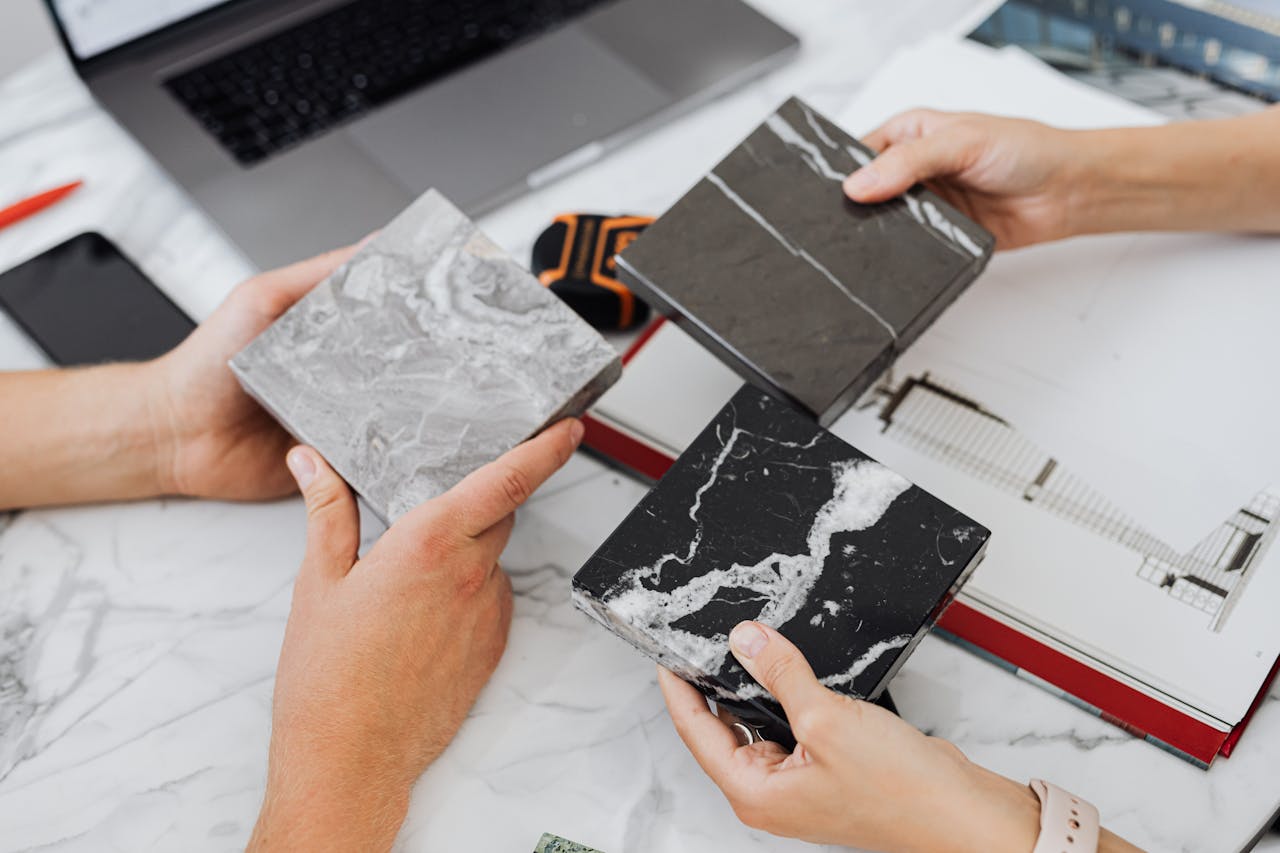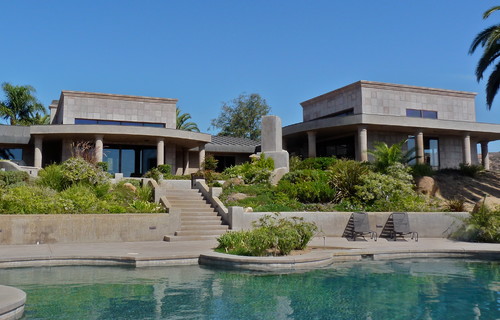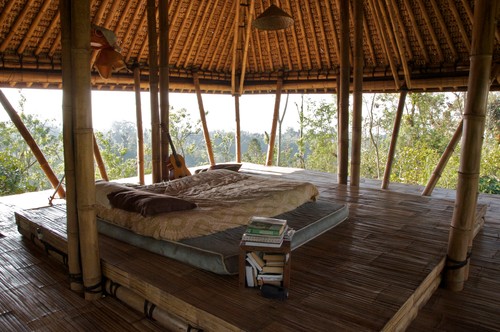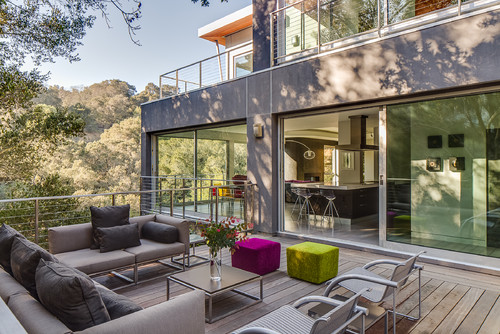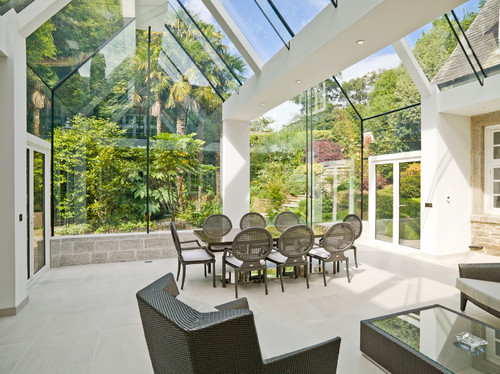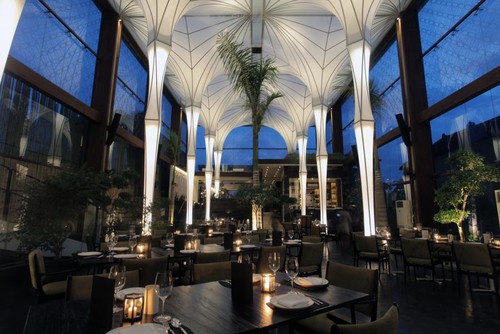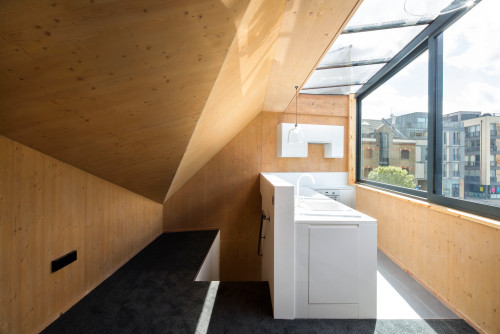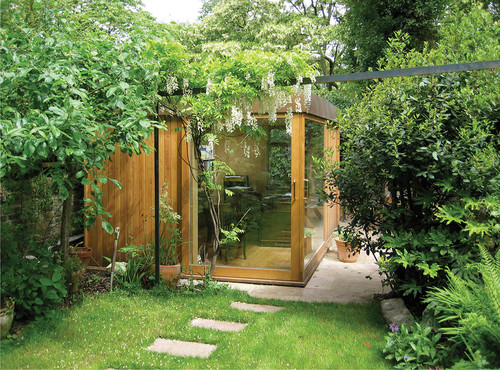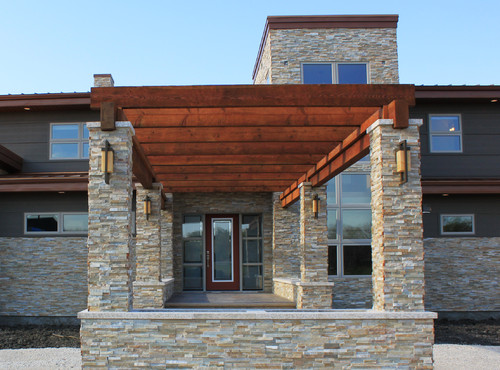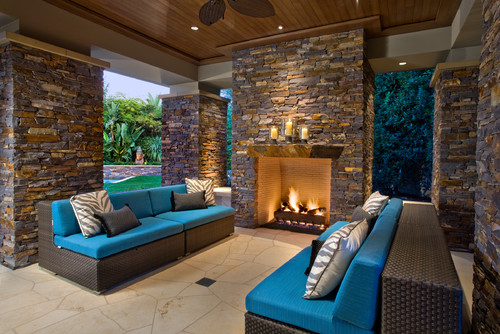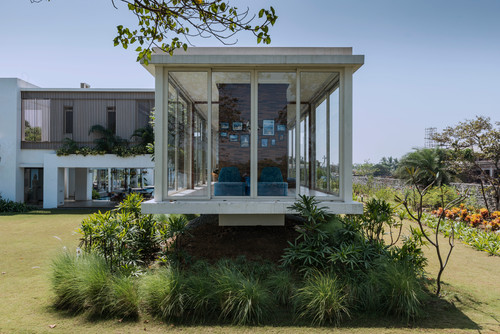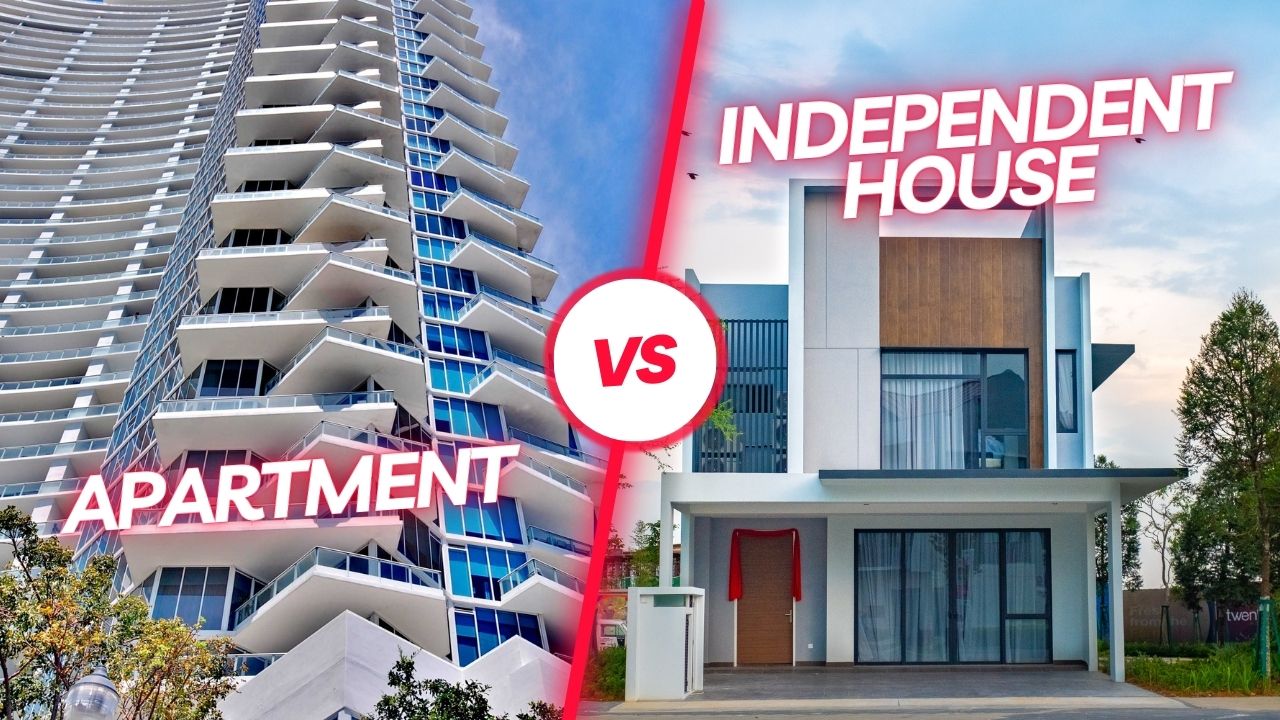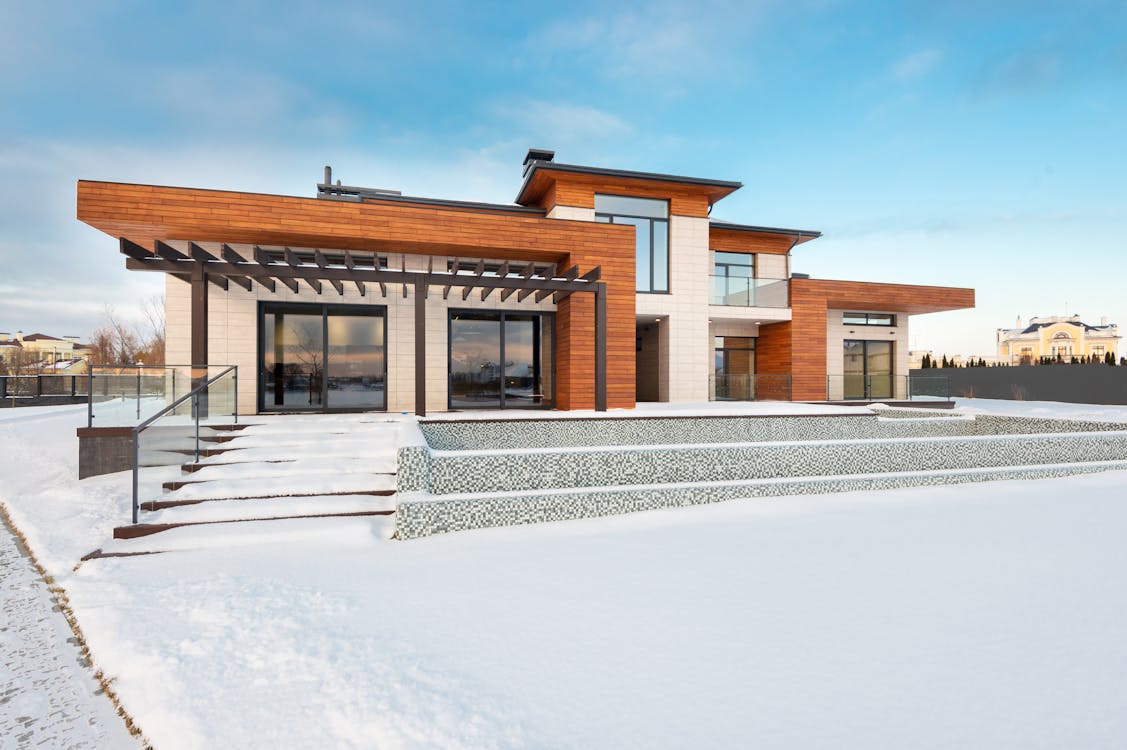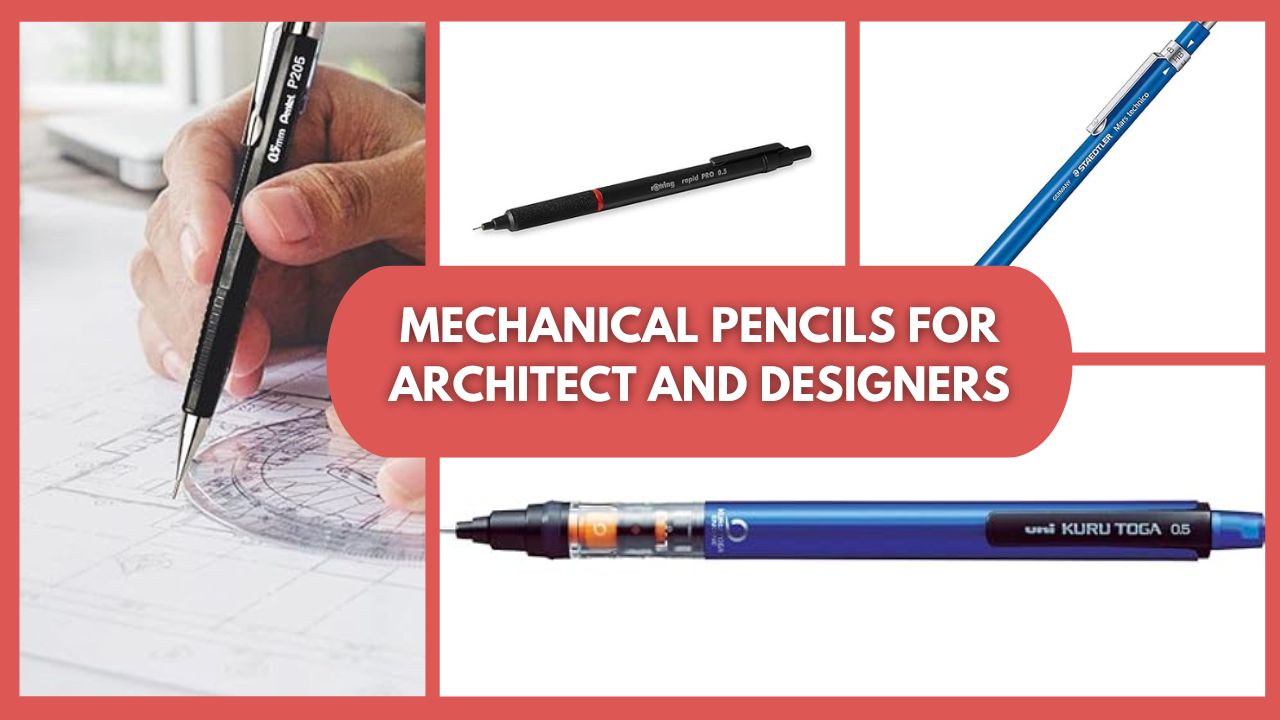While there are building materials that have been used for centuries, every period has a set of materials that are more commonly used than the others. These must-know materials for architects form the vocabulary of contemporary design. Understanding modern architectural materials is essential for creating durable and sustainable structures. Below are 12 cutting-edge materials for construction that every architect should explore:
1. Concrete- Durable and Versatile choice
Concrete, a timeless material, remains one of the most modern building materials for architects. Owing to its strength, concrete finds use in the construction of an array of structural elements (floor, slab, columns, beams, etc.), roads, bridges, underwater construction, etc. It is a composite formed by mixing cement, water, aggregates, and admixtures in certain proportions. The ratio of the materials used to make the concrete determines the strength of the mix.
Once the concrete mix is ready it is poured into the formwork. One of the most important steps is curing, as it adds to the strength of the concrete. The concrete surface can be finished with textures. One can even add a hue to the concrete mix to add colour to the concrete element.
Architects are now experimenting with sustainable building materials, such as self-healing and light-emitting concrete. These innovations make concrete an innovative building material for modern homes.
2. Bamboo- Eco-friendly Construction Solution
Bamboo, a sustainable building material for architects, is gaining popularity for its strength and renewability. It not only is a greener material for construction but also exhibits high stability, so much so that it can replace steel reinforcement in concrete construction. The best part about bamboo is that it can be reproduced in 3 years. The use of bamboo has evolved from being a material for temporary use to a material being used to construct permanent structures. It has become a must-know material for architects focusing on green construction. Its adaptability makes it one of the best materials for architectural design projects.
3. Stainless Steel- Timeless and Recyclable Material
Stainless steel is a staple in modern architectural materials due to its corrosion resistance and versatility. This material is known for its incredible strength. With its corrosion resistance and availability across various finishes and sections, its applications have increased, thus enhancing the versatility of stainless steel. Additionally, its 100% recyclability aligns with the growing demand for eco-friendly building materials for designers. It is a highly durable material with low maintenance requirements and a high aesthetic quotient.
This building material is extensively used in structural elements as well as for décor, external as well as internal elements. Some common applications include cladding, handrails, plumbing elements (pipes, faucets, etc.), wall support systems, hardware, roofing, reinforcement, etc. This material continues to carve a deeper niche for itself. Construction in these times seems nearly impossible without using stainless steel in one form or the other.
4. Plastic- Lightweight and Durable Innovation
Plastics in various forms have carved a niche in the building material segment. With the variations available, it is being used in interiors and exteriors. The various plastics being used are – acrylic, composites, expanded polystyrene (EPS), polycarbonate, polyethylene, polypropylene, and polyvinyl chloride (PVC). When choosing a type of plastic, one should study its strength and recyclability in order to adopt greener materials in construction.
Owing to their strengths, lightweight, corrosion resistance, cost-effectiveness, ease of transportation, high durability, easy installation, and maintenance, these have made a place for them in the modern building materials palette. Designers are incorporating these as they are very versatile in exploration and innovation as these can be shaped by an array of techniques such as bending, engraving, molding, etc. They can acquire any pigment and work with light, thus giving an edge to the designers to play with this material. The applications include – pipes (plumbing, electrical), cables, flooring, roofing options, windows, doors, panels, hardware accessories, temporary structures (such as portacabins, tents, etc.), insulation, etc. With recycling becoming the norm of the century, recycled plastic elements such as panels and blocks are also being used in construction. Recycled plastics also contribute to sustainable building materials for architects.
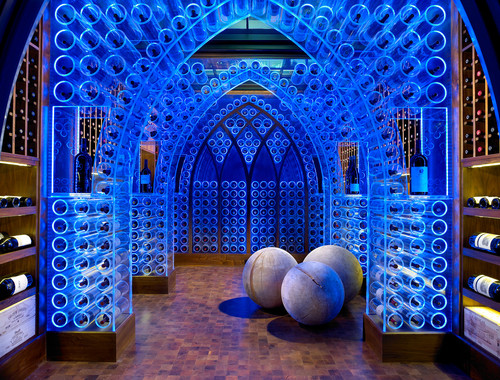
5. Glass- Transparent Elegance Redefined
Glass is a modern building material for architects, known for its transparency and energy-efficient properties. It is one of the most gorgeous materials, and one cannot imagine a structure without it. With the innovations in construction energy, glass has evolved from a material reserved for window panes to a material with structural strength and insulation. Though glass is used for its transparent nature, it is available in various finishes such as tinted, translucent, laminated, etched, stained glass, etc. Glass is used in the form of panels and bricks to diversify the application. With the modern era of construction being marked with glass and steel, one can see glass being used for curtain walls in commercial complexes and skyscrapers.
To deal with aesthetics, innovations concerning solar heat gain absorption have led to the development of technology where the glass doesn’t absorb heat. There are innovations in the field that will help generate electricity with solar energy through glass; this material is evolving into one of the smart building materials for modern homes. Glass is a modern and green material as it is 100% recyclable with a wide vista of applications.
6. Building Textiles- Innovative Fabric Solutions
Fabrics are redefining construction with modern architectural materials like tensile membranes and chromic textiles. There are a lot of fabrics that are being used for the construction of both temporary and permanent structures. This tensile material applies to roofing, awnings, canopies, scaffolding, hoardings, etc. The innovations can lead to endless possibilities in the application of building textiles. The building textiles exhibit strength, resilience, and lightweight properties.
There are a variety of construction or building textiles available in the market, one can choose the best based on the requirements. Innovation and technologically led textiles offer intelligent solutions, too. The textiles can also enhance the ambience of spaces by changing the colours. This is possible with textiles of chromic materials that react to light, heat, pressure, and electricity. Other notable innovations under this category include phase-changing materials (PCM), conductive optical fiber, and shape memory materials.
7. Hempcrete- Sustainable Concrete Alternative
Hempcrete is a bio-composite material and a must-know material for architects focusing on sustainability. It is light in weight and highly durable. However, it is not quite suitable for constructing load-bearing elements. This material is very easy to work with and holds a lot of potential for exploration in the construction field. It has good insulation properties, and it provides moisture regulation, too, making it suitable for diverse locations.
8. Wood- Natural and Versatile Choice
Wood, a classic material, remains a modern architectural material due to its aesthetics and strength. It is a highly versatile material that has served as a structural element for formwork, functional elements, and décor. It is still a popular material of choice amongst designers and their clients. One is aware that wood is popular owing to its aesthetics, insulation properties, and massive strength (depending on the type of wood).
Machines can work on this material to carve out the desired form. Given the sustainable context of the materials, this is a recyclable and biodegradable material. Since natural wood is a source that requires time to grow and acquire, there have been innovations in this regard to preserve natural resources. Man-made wood or engineered wood products, such as plywood and MDF, offer eco-friendly building materials for designers while preserving natural resources.
9. Stone- Evergreen and Durable
Stone, including granite and marble, is a cutting-edge material for construction. The feel and finish of the surface depend on the type of stone used in a structure. Stone is a material that is used both externally and internally. Applications of this material include façades, cladding, flooring, wall panels, accent walls, kitchen tops, window sills, etc. Stone has been a popular material due to its strength and resistance to abrasion. The surface can be polished to give the desired look (coarse to matte to mirror).
Some commonly used stones are granite, marble, sandstone, and Kota stone, ensuring its place in modern building materials for architects.
10. Aluminium- Lightweight and Strong
Aluminium is a smart building material for modern homes, used in window and door frames, window and door panels, roofing systems, staircases, ducting, HVAC systems, furniture, etc. Aluminium responds well in almost all climate types. Its lightweight properties and recyclability make it an essential modern architectural material for high-rise structures. It is extensively used in high-rise structures to reduce the dead load. Since the material is compliant with polishing and anodizing, it can be given colour according to the requirements of the designers. It is a metal that the architects must undoubtedly know about.
11. Paper Tubes- Innovative Temporary Structures
One certainly would not be able to imagine using paper in the construction industry as a construction material. However, designers have explored and innovated this material to build many structural and decorative elements. Of the paper elements, paper tubes have greater strength and are being used to create ceilings and pavilions. The construction of paper tubes was pioneered by Shigeru Ban through a system of columns made of paper tubes. These recyclable and durable materials are ideal for creating temporary pavilions and decorative elements in modern architectural materials.
12. Bricks- Building Blocks of Design
Bricks have been a primary building material and are one of the first materials an architect studies and even a common man is familiar with. Bricks are the building blocks of a structure and can be given various finishes or left exposed according to the likes of the users and the language of the designer. This is one material that is going to be an eternal part of a designer’s vocabulary. While we were all acquainted with clay or terracotta sun-dried bricks, with the evolution in the field, we now have an array of bricks to choose from. Apart from the clay bricks, the other options available are AAC (Autoclaved Aerated Concrete) blocks, Hollow blocks, and bricks made using waste such as fly ash, cigarette butts, rice husk, etc. Innovations in brick design contribute to sustainable building materials for architects aiming for efficiency and durability.

Every designer should know diverse materials to achieve their structures' desired looks and finishes. With time, the materials and material palettes evolve. However, there will always be a set of materials that an architect must know about. These materials should never restrict a designer from exploring other materials that might suit their designs. The above article discusses 12 modern materials that every architect must know to employ in their designs efficiently. These materials are a mix of a few evergreen and innovative materials, the application of which can be designed appropriately in the structure.
While this was my list of the building materials that one should know about, feel free to post your suggestions to add to the list!
We think you’ll enjoy these reads as well Pro Tips to Complete an Architectural Project within Budget
and, Transform Homes with These 10 Unique Building Materials

